Injuries in the backcountry are not a matter of if, but rather when they might occur. This backpacking first aid kit checklist prepares you for the unfortunate times when you really need the supplies that should be in there.
Many experienced backpackers neglect regular checks and upgrades to their first aid kits. If you’re like me, your kit may have even sat in your pack for years without being replenished.
Article Overview
How to Use a Backpacking First Aid Kit Checklist
Pull this checklist out every spring when you’re getting your pack ready for your first overnighter. Personally, I like to plan a short overnight trip at the start of the season to test my pack and backpacking gear before longer trips.
This helps me evaluate any repairs or replacements I need to make before heading deeper into the wilderness. In the case of your first aid kit, spring is the perfect time to evaluate what you used last year and what you need to replace. Use this checklist to help you do that.
And don’t forget the value of planning in advance! If you check your first aid kit in the fall and restock then, it’ll be ready to grab and go when your friend spontaneously invites you on your first backpacking trip of the season.
My Backpacking First Aid Kit Checklist
Here’s everything I like to keep in my backpacking first aid kit. Check yours before you start your backpacking season and replenish it often to avoid being up a mountain without a Band-Aid!
1. First Aid Manual
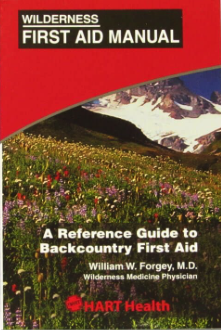
Some of you out there will obviously have more first aid and trauma experience than others. If you’re a trained EMT or Wilderness First Responder, your manual is probably in your head, for the most part.
However, if you’re untrained in wilderness first aid techniques, making sure your kit contains a manual for how to effectively treat some of the most common backcountry injuries is essential.
2. Sterile Gauze Pads

One of the supplies I hope you never have to use is sterile gauze pads. If you do, they’ll help you prevent blood loss in the case of a moderate to severe laceration. They can be used to pack wounds and also to stabilize objects that become impaled in the skin.
Your backpacking first aid kit list should include various sizes and types (stick and non-stick) of sterile gauze pads and, for the record, sterile means that they are still safely contained in their original packaging. Once that packaging is opened, pads that have been sitting in your kit for an extended time are no longer sterile.
3. Sterile Adhesive Bandages
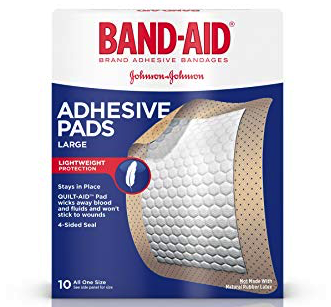
Bandages are essential whether you’re using it for backpacking or simple first aid around the home. Be sure to stock your kit with various sizes of bandages, as well as different types. Larger bandages are great for covering minor cuts and scrapes.
Butterfly bandages, for example, are great to help close up larger lacerations. Knowing what you tend to use most, but also preparing for all scenarios, will help you decide on the assortment of bandages to always keep in your kit.
4. Adhesive Tape
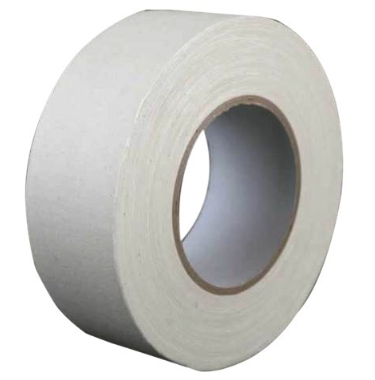
Even more than bandages, adhesive tape is the supply I use most in my backpacking first aid kit. When you’re on the go (especially as an outdoor guide), tape provides an easy way to cover and seal minor cuts from potential infection (after sanitizing of course).
There are many varieties of athletic tape out there, but I tend to go for the one-inch type because it provides enough surface area to stick to itself and last throughout a full day of high activity.
5. Tweezers and/or Safety Pins
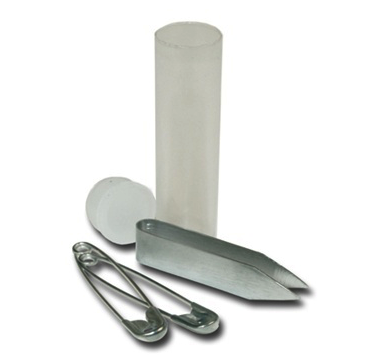
If you’re an outdoor enthusiast who loves any level of activity, you know that, eventually, things get stuck in your skin that you don’t want to be there.
This can be splinters, rocks, cactus needles, and so much more. Tweezers or safety pins will give you a practical (although not always comfortable) means of removing these items before they become a real nuisance. Adding a lighter to your kit will also give you a way to sanitize pins before using them to excavate that pesky splinter.
6. Antibacterial Ointment
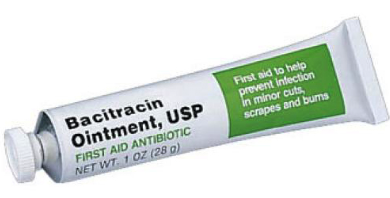
Antibacterial ointments, such as Neosporin and Bacitracin, will help to prevent infection when dressing wounds. These days, many experts are recommending Bacitracin over Neosporin. The main reason for this is that people can be allergic to Neosporin because of one of its additional ingredients, neomycin.
7. Blister Treatment
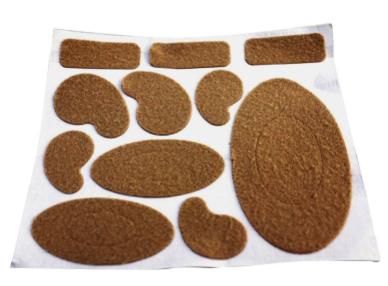
Have you ever made the mistake of not fully breaking in a new pair of hiking shoes before starting a long, multi-day backpacking trip? If so, you know how blisters can turn an otherwise fun trip into a nightmare.
That’s why blister treatment supplies, such as Moleskin, are essential to any backpacking first aid kit list.
8. Antiseptic Wipes
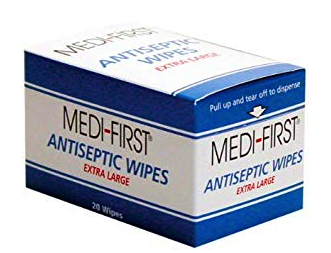
Before applying bacitracin or Neosporin (if you’re sure the person isn’t allergic), it’s necessary to clean and sterilize wounds. The first method for doing so is through a simple application of water over the wound to clean out dirt and bacteria.
Antiseptic wipes are a good way to follow up on that initial rinse. The most common active ingredient in antiseptic wipes is benzalkonium chloride.
9. Pain Relief Medication
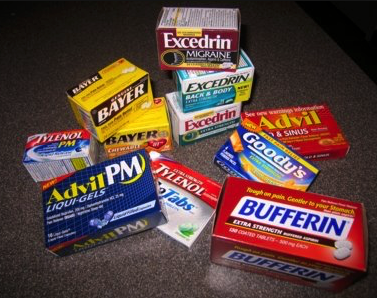
Depending on your preferences, your stock of pain relief medication could include Ibuprofen, Acetaminophen, Naproxen, and others. These three are the most common active ingredients in products like Tylenol (acetaminophen), Advil (ibuprofen), and Aleve (naproxen). For more serious treks and excursions, some heavier-duty pain relievers may also be considered.
10. Antihistamine
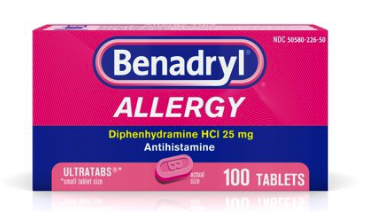
For me, this is arguably the most important, life-saving item you can include on your backpacking first aid kit checklist (Feel free to message me about the time I almost killed one of my best friends because I forgot about his allergy to shellfish).
A quality antihistamine, such as Benadryl, will help to treat allergic reactions where the time from the initial realization of a reaction to severe complications can be incredibly short.
While most people that are aware of a serious allergy carry Epi-Pens these days, there are many folks that may be totally unaware that they will have an allergic reaction to certain proteins. Being prepared with an antihistamine when this discovery unfortunately happens is essential.
11. Triangular Bandages
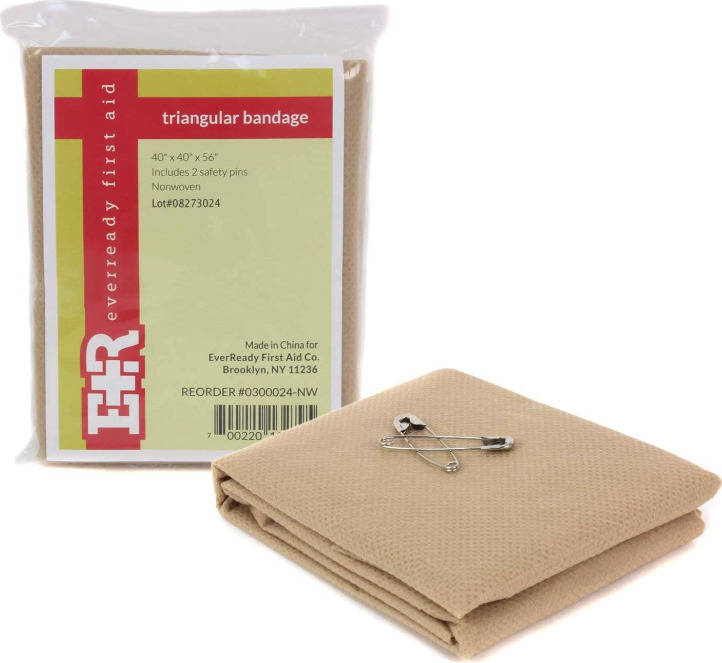
Triangular bandages come in handy when you need to create a splint for a broken or strained appendage. In my WFR certification, we used them for splints and slings for everything from a broken collarbone to a fractured femur.
We also learned how to supplement triangular bandages with personal clothing and other items we had in our packs. Carrying additional layers can be useful for more than just keeping you warm as temperatures drop.
Use This Backpacking First Aid Kit Checklist!
Your backpacking first aid kit is only as good as the supplies it contains. If it’s been several years since you’ve done a check, use this backpacking first aid kit list to ensure your kit is well-stocked and ready for a season of outdoor adventures.
What does your backpacking first aid kit look like?
I want to know what your essentials are and what you feel is excessive. I’d love to hear your feedback in the comments section below. I’ll be quick to reply to any questions, comments, or concerns you feel like sharing!
About The Backpack Guide
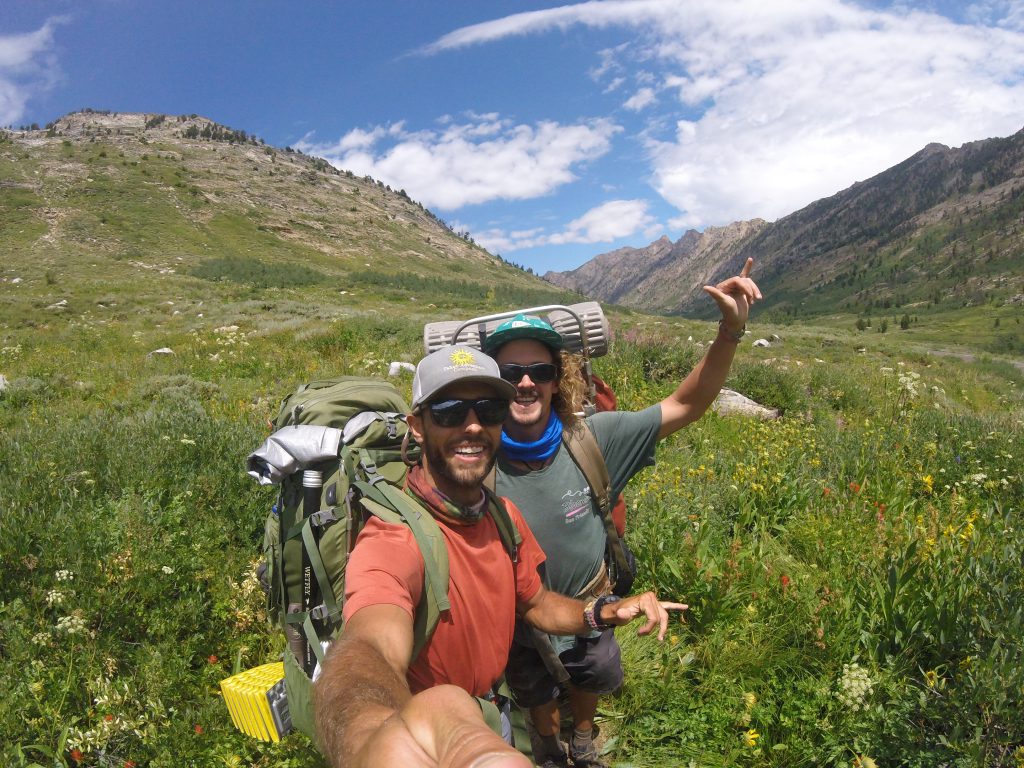
As The Backpack Guide, I’m always looking for new trails and wildernesses to explore and I’m also interested in the experiences of others in the wild. If there is one thing I am sure of it’s that we can all spend more time enjoying and connecting with Nature.
Feel free to reach out to me directly, or share your latest adventure or water bottle story by tagging @thebackpackguide on Instagram, Facebook, or Twitter!
Take Care On The Trail!
The Backpack Guide
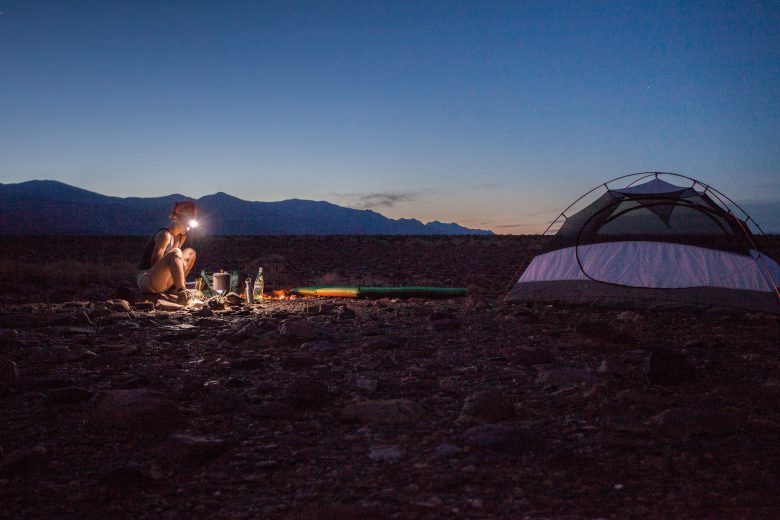
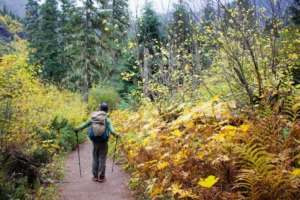
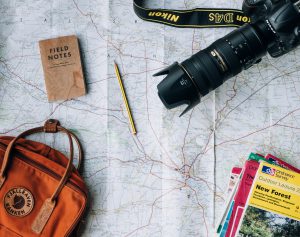
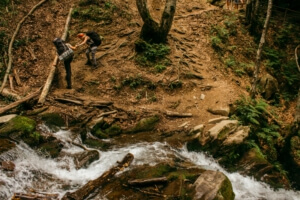
Comments
my first aid kit is most probably full of items that are out of date so thanks for the reminder! Good shout for the antihistamines, probably one of the most important items to have with you and my kit is without! Mine does however have anti sickness tablets which are handy 😉
Author
Great call! If you have any friends with severe allergies, Benadryl (antihistamines) are a must. I’ve been in need of Dramamine in a pinch before too, but it’s often too late once you realize you need that, as it need to be taken in advance!
I never thought of having an actual first aid manual, I suppose it would be helpful to know how to use the things in your kit, especially if you’ve never taken first aid classes before! I think that’s definitely something I’d be concerned about (not knowing how to use things).
Do you think it’d also be a good idea to have something to reset bones in case something gets broken? Then again, I guess it would depend on what you were planning to do, such as hiking, mountain climbing or exploring caves.
Author
When it comes to something like resetting bones in the wilderness, I really wouldn’t recommend trying it unless you have some formal training in the proper technique. In “first aid land,” we talk about first doing no additional harm, and then doing what we can to alleviate pain or reduce further injury. Resetting bones can and should be done in extreme cases where help is a long way away, but like I said, only if you know what you’re doing. In that case, a SAM splint can help to stabilize once it’s reset.
Thanks for the post it really reminds me of the importance of backpack, I am always careless when going for adventure at time I left out the most important thing out of my backpack and put those that are not useful but this article has help me realized the importance of backpack and how to use the necessary materials and also pick the materials necessary for my adventure, I am really grateful for this post.
Your post is very detailed and so important for everyone you likes to travel, especially when Backpacking, but also kayaking (what I love to do) etc.
Nevertheless, we love being in Nature and therefore have to be prepared one way or another.
I am a retired Nurse and also in “charge” for packing our First Aid kit and I can confirm your checklist as very important. I further put in Anti-Nausea medication as well something against Diarrhea, after all you never know, right?
However, I never used a First Aid Manual guide for being in the wilderness but I will get one.
Thank you for sharing all the information.
Hi Belister, you have posted wonderful information about First Aid Kit. I would not even know all types of first aid kit and it’s uses in different urgent matter until I read your article. The most important thing is first aid guide which is not available to everyone and one can avoid critical situation if this type of First Aid Kit is kept with.
I found this information is helpful for me. Thanks for sharing this.
Thank you for another really good article on backpacking!
I always carry a first aid kit when I’m doing outdoorsy activity. While I’m not a hiker, per se, I am still vulnerable to nature as a tourist in a national park, like Yosemite, for example.
The way I keep my first aid kit fresh is, I use it. Sterile gauze pads are hard to keep sterile because heat and humidity cause the packages to come open (Heat is a factor because I keep a first aid kit in my car and carry it with me when I do this kind of activity). I am generally generous with gauze pads and tape (Which gets gooey in the heat) when I see someone in more need of first aid than they have available to them.
Most of the time, it’s a kid with a skinned knee or a small cut and the parents are not prepared to have a kid on their hands who cannot see his own blood.
So I get into my kit and assess what is aging in my kit. I will often leave someone that I helped out with a few more gauze pads and a couple of packets of triple antibiotic gel so they can enjoy the rest of their day and I’ve have achance to see the condition and content of my first aid kit.
So, I never thought about an antihistamine for my kit. What a great idea!
I wonder… will it also help slow the onset of symptoms for a snake or spider bite or a bee sting as well?
Author
I love that approach to keeping your kit fresh! Pay it forward! You sound like what we’d refer to as a “trail angel” for a lot of those parents that weren’t prepared for their kids to get hurt out there. Thanks for that! And you’re absolutely right about the use of antihistamines to slow the onset of symptoms for bites and stings, especially against our insect friends in the ‘Hymenoptera’ family, i.e. bees, wasps, hornets, etc.
Thank you for the detailed first aid kit list.
It has been a while since I last packed my first aid kit. I have almost all the necessary items in my first aid kit. But I missed out the most important item – antihistamine. Thank you for the remainder.
You’re right. We have to use a check list to make sure our first aid kit is well stocked.
I call myself a hobbyist backpacker – or hiker would be a better term – and I’ve been doing it with a friend for the past few years, just to get out into the country. When I started I got all the gear 🙂 including a pre-packed first aid kit. My main memory is of the boots which were comfortable in the shop but, yes, as you ay, I didn’t break them in and actually cut my first hike short. The pack didn’t contain any blister pads or treatment. Didn’t go out again for a month but I still have the boots and they’re now as comfortable as slippers! 🙂
I don’t do massively rugged climbs or walks as you probably do so perhas avoid the worst scenarios. I do love to get in the middle of a field or wood clearing and listen to… nothing! 🙂
Anyway, most injuries we’ve had have been scratches and small cuts, and band aids have done the job there. My friend did sprain his ankle once going down a hill. We managed to hack off a tree branch thanks to a rather small Swiss Army Knife he had been given as a present – is that a first aid item or does it come under some other category? Anyway, we now take a small saw with us since them 🙂 So with the aid of the branch and my shoulder, we got back to the car. Harded hike I’ve ever done!
I’ve ransacked our hiking first aid kit for band aids at home but your article has promoted me to take another look at it and put a custom kit together. Even we hobbyist hikers need to be prepared! 🙂
Thanks for the great info!Ian
Please, no one should be left with the impression that Benadryl is a potential lifesaver.
Antihistamines do NOT treat anaphylaxis; they only mask some of the symptoms.
Author
Absolutely correct! In a wilderness setting, they’re definitely better than having nothing. Still, I’d recommend administering and promptly executing a safe evacuation plan to get more advanced medical care for any individual experiencing a severe allergic reaction in the wild.